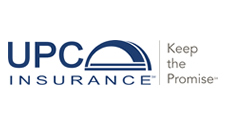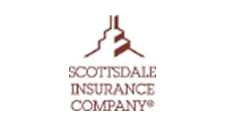Best Practices & Preparations for Winter Weather Driving
Getting Your Car Winterized & Preparing for an Emergency on the Road
Winter is upon us, North Carolina! And that means winter weather - which doesn't have too much of an effect on most people's work or school schedules - so it's probably a good idea to have your car and yourself prepared to lower your risks of a breakdown or accident.
Winterizing Your Car
Getting your car prepared for winter may not seem necessary when you live in a climate that fluctuates during the winter months, much like it does in some parts of North Carolina. But, when below-freezing temperatures do hit, it's best to make sure that your vehicle is prepared so there is less of a risk of breaking down in the cold. Here are the major things to have checked by your local service center when winterizing your vehicle:
- Electrical System
- Battery: Your battery is the heart of your vehicle's electrical system, and a fully-charged battery is required for cold-weather starts. Have your service technician run a battery test to test the strength of your battery and replace if needed. Also ask to have your alternator, voltage regulator, and drive belts checked as well.
- Ignition System: Damaged ignition wires, a cracked distributor cap, or worn spark plugs can make turning your engine over a struggle or cause a sudden break-down.
- Lights: In harsh weather conditions, your headlights, tail lights, and brake lights could be the difference between getting into an accident or not. It's crucial, not only just during the winter, but all the time, that your lights are functioning and that other drivers can see you on the road. If your headlight lenses are foggy, or scratched, you could have them cleared up for you professionally at a car detailing center. If your budget doesn't allow that, you can visit your local auto parts store and pick up a headlight restoration kit. Or, if you would rather do it yourself, there are plenty of helpful articles on Pinterest that will give you step-by-step instructions on how you can de-fog your headlights with household items.
- Brake System Your brakes, in any weather condition, are extremely crucial for your own safety and other drivers on the road. If you can't remember when the last time you had your brakes replaced, or you haven't since you've owned your vehicle, have your technician check for you. Unfortunately, there's no real mileage-mark or time frame that tells you when you should change your brakes. It is all dependent on how often you drive, and whether you do more city-driving over highway driving. Obviously, the more braking you have to do, the sooner they'll need to be replaced. You can also check out this article: 5 Signs Your Brakes Need to Be Replaced.
- Tires The traction between your tires and the road determines how well your vehicle accelerates, turns, and stops, so it's important to make sure that your tires are not only in good condition, but that they're also properly inflated. Areas that are more prone to moderately-snowy weather conditions, it may be best to equip your vehicle with some all-season (M+S rated.) If you live somewhere that normally experiences a great amount of snowfall, tires specifically designed for use in the snow would probably be a better choice.You can check out this article to learn all about tire pressure, rotations, alignment, and what signs to look for to know when it's time for new rubber.
- Exhaust System The exhaust system serves 2 main purposes:
- Carrying off carbon monoxide (CO2) and other harmful gases produced by the engine
- Muffling engine noiseCarbon monoxide is extremely poisonous, extremely odorless, and extremely hard to detect, which could all result in an untimely death. Having your mechanic look over your exhaust system for leaks can minimize the chances of CO2 poisoning. If your car is stuck in snow and you have your engine running, slightly crack a window and clear as much snow as you can away from the exhaust pipe. - Heating & Cooling System Make sure that your vehicle's cooling system contains enough antifreeze in the reservoir to prevent freezing. Have your service technician check for any leaks in your coolant system and make sure that you're using the best type of coolant for your vehicle - You can find that information in your car manual.
- Windshield Wipers, Washer Fluid, Glass, and Overall Exterior If your windshield wipers make your view more streaky than clear, it's a good idea to replace those to optimize your visibility on the road. Also, if your wipers are starting to wear, it won't be too long until they start scratching your windshield, and windshields aren't cheap. It'd also be a good idea to get some windshield-wiper fluid that has some de-icing solution in it, so spraying your windshield actually gets rid of any ice, instead of just making more of it. (Admit it, you've done it before.)And, just in case you do forget to pick some up and find yourself with an icy windshield one morning, there are plenty of solutions that you can make yourself at home, most containing just vinegar and water.
Be Prepared for the Worst Anyway
Even if you have gotten your vehicle winterized and checked off everything in the above list, you and your car are still not invincible, so it's best to be prepared just in case. First, try to keep your car's gas tank at least half-full at all times to prevent fuel lines from freezing. Also, if you're just stuck and your engine can still turn over, you'll be able to stay warm longer.
You should also ake yourself a little 'winter emergency driving kit' to keep in your car including:
- Small Snow Shovel
- Snow Brush / Ice Scraper
- Cloth/ Paper Towels / Bath Towels
- Gloves or Mittens - preferably the super-warm kind
- Flashlight
- A Bag of Abrasive Material - sand, salt, cat litter, etc.
- Traction Mats
- Jumper Cables
- Road Flares or Triangles
- A Blanket
- A car charger for your cell phone, or a fully-charged portable battery pack
Winter Weather Driving : Snow and Ice
If you must go out and drive, whether it snowed the night before, or it's snowing now, start your car and run just your heater for a few minutes before turning on the defroster. This will actually prevent moisture from fogging up the glass on the inside when the warm air hits the cool glass. While you're waiting, clear off as much snow as possible from the hood and the back windshield so your visibility isn't compromised.
When you're out on the road, increase the distance you normally would behind another vehicle (3-4 seconds) to about 8-10 seconds to make sure that you have enough time to stop and avoid collision in front of you.
If you're driving on a highway with more than two lanes, stay in the lane that's the most clear (of snow & ice, not cars) and try to avoid changing lanes to lower your chances of losing control of your vehicle. Also, remember that traction is highest between the road and your tires before the wheels start to spin, which is probably why you've never seen anyone at a complete stop suddenly lose control. To keep the most control when you do start moving, accelerate very slowly and ease up on the gas pedal if you do feel your tires starting to slip. And don't use cruise control when roads are slippery.
Steering
Steering while driving on ice and snow may be difficult and your car is more prone to skidding if the steering wheel is jerked too quickly, hard acceleration or braking, or you are going too fast for the road's condition. If you need to avoid a collision ahead while driving on slick roads and are travelling over 25 MPH, it is recommended that you steer out of the way (but don't jerk it to fast!) rather than brake really hard, or else you'll probably lose control.
Braking
If you're one of those who like to wait till the last second to hit the brake pedal, pay extra attention. Stopping on ice and snow requires a lot of room, so you'll want to press on the brake slowly when you're coming up to a stop.
You should be extra cautious when driving through shaded spots, bridges, overpasses, and intersections, since these areas tend to be the most slippery. So make sure to focus on the road ahead and see how other vehicles are reacting and handling those parts to make sure that you are not caught by surprise when you get up there. When road conditions change, so do braking requirements.
If your vehicle does not have an anti-lock brake system (ABS), the best way to stop when the roads are bad is by holding your heel on the floor and keeping your entire foot flat on the brake pedal. Use the ball of your foot to apply firm, steady pressure on the pedal to the threshold of locking your brakes.
However, if your car does have and anti-lock brake system, keep your foot down hard on the brake pedal. If you are holding the brake hard enough, the brakes will lock momentarily and you'll probably feel the pedal vibrate or pulse. It's kind of scary if you've never felt it before, but it's really normal. Just don't pull your foot up when it does this.
The best way to prepare for this, especially if you're not sure whether you feel safe driving in these conditions, is to go to an empty parking lot near your home and just practice to get a feel of how much longer you need to brake and how it feels if your brakes do start to lock up.
Skids
As we mentioned before, skidding can be a result of braking too hard, accelerating too fast, or turning the wheel too quick. If you do lose traction in either your front or rear wheels, you want to be sure not to panic and brake really hard. The best thing to do is keep steering in the direction of where you want your front tires to go and wait until your tires regain traction.
So, by now you should be ready to take on winter driving confidently and safely. Sadly, although you may have read this, you still have to worry about other drivers on the road who may not have. So, an accident may still occur. Make sure that you have proper auto insurance coverage. And, make sure to check out our post about how to best prepare your home and your family for a winter storm.
NC Coastal Home Insurance works harder to protect your most precious assets and serves all of North Carolina. We are dedicated to making the insurance shopping experience as simple and informative as possible. We are partnered with leading insurance companies and organizations to provide you with the best possible coverage, options, and rates. We promise you'll love shopping with us. For more information regarding preparing your home or family from winter storms, contact a NC Coastal Home Insurance agent at (910)591-1010 or contact us by filling out the form below!






